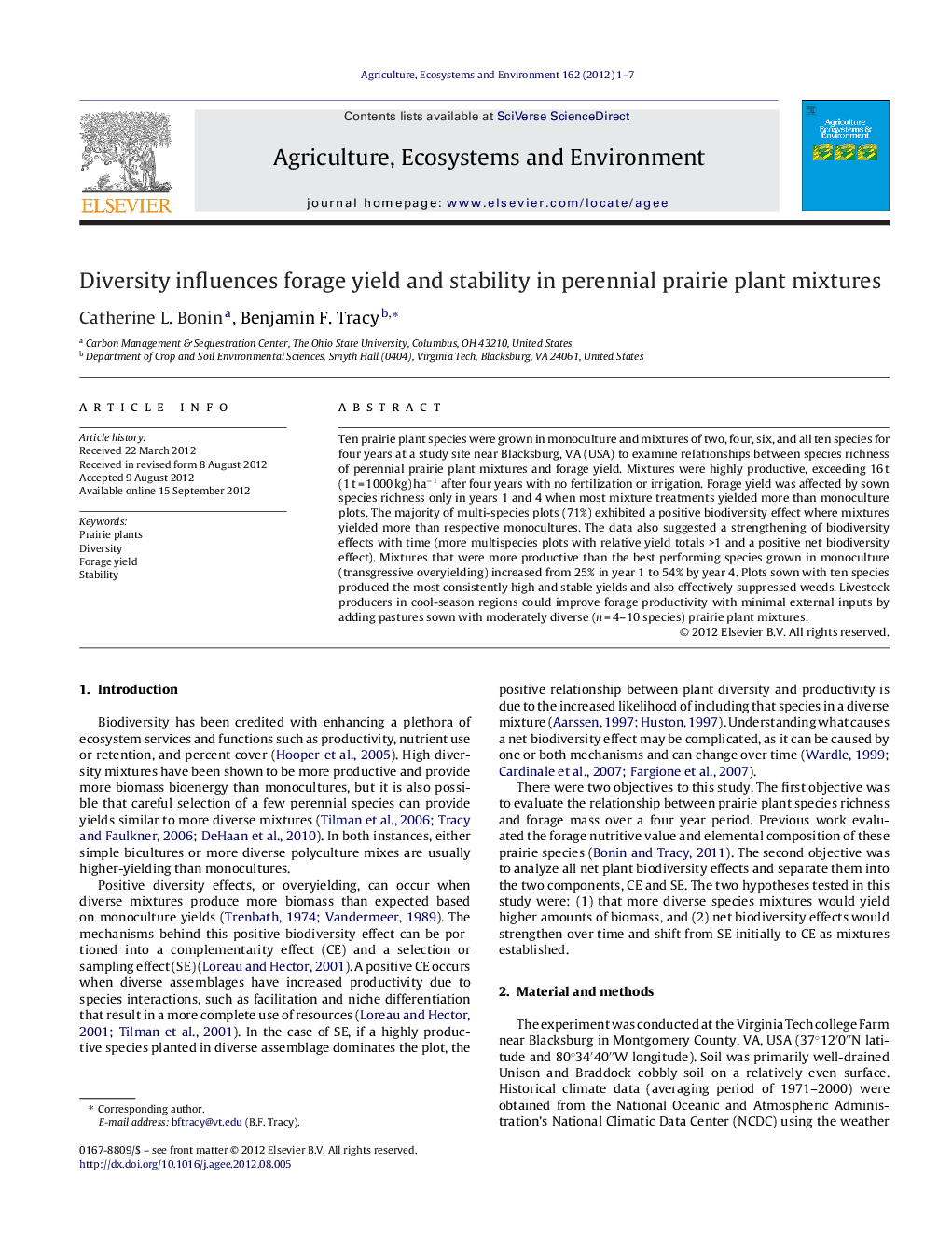| Article ID | Journal | Published Year | Pages | File Type |
|---|---|---|---|---|
| 2414379 | Agriculture, Ecosystems & Environment | 2012 | 7 Pages |
Ten prairie plant species were grown in monoculture and mixtures of two, four, six, and all ten species for four years at a study site near Blacksburg, VA (USA) to examine relationships between species richness of perennial prairie plant mixtures and forage yield. Mixtures were highly productive, exceeding 16 t (1 t = 1000 kg) ha−1 after four years with no fertilization or irrigation. Forage yield was affected by sown species richness only in years 1 and 4 when most mixture treatments yielded more than monoculture plots. The majority of multi-species plots (71%) exhibited a positive biodiversity effect where mixtures yielded more than respective monocultures. The data also suggested a strengthening of biodiversity effects with time (more multispecies plots with relative yield totals >1 and a positive net biodiversity effect). Mixtures that were more productive than the best performing species grown in monoculture (transgressive overyielding) increased from 25% in year 1 to 54% by year 4. Plots sown with ten species produced the most consistently high and stable yields and also effectively suppressed weeds. Livestock producers in cool-season regions could improve forage productivity with minimal external inputs by adding pastures sown with moderately diverse (n = 4–10 species) prairie plant mixtures.
► Mixture yield exceeded 16 t ha−1 after four years with no fertilization or irrigation. ► A majority of multi-species plots exhibited overyielding. ► Moderately diverse prairie plant mixtures can improve forage productivity with minimal inputs.
